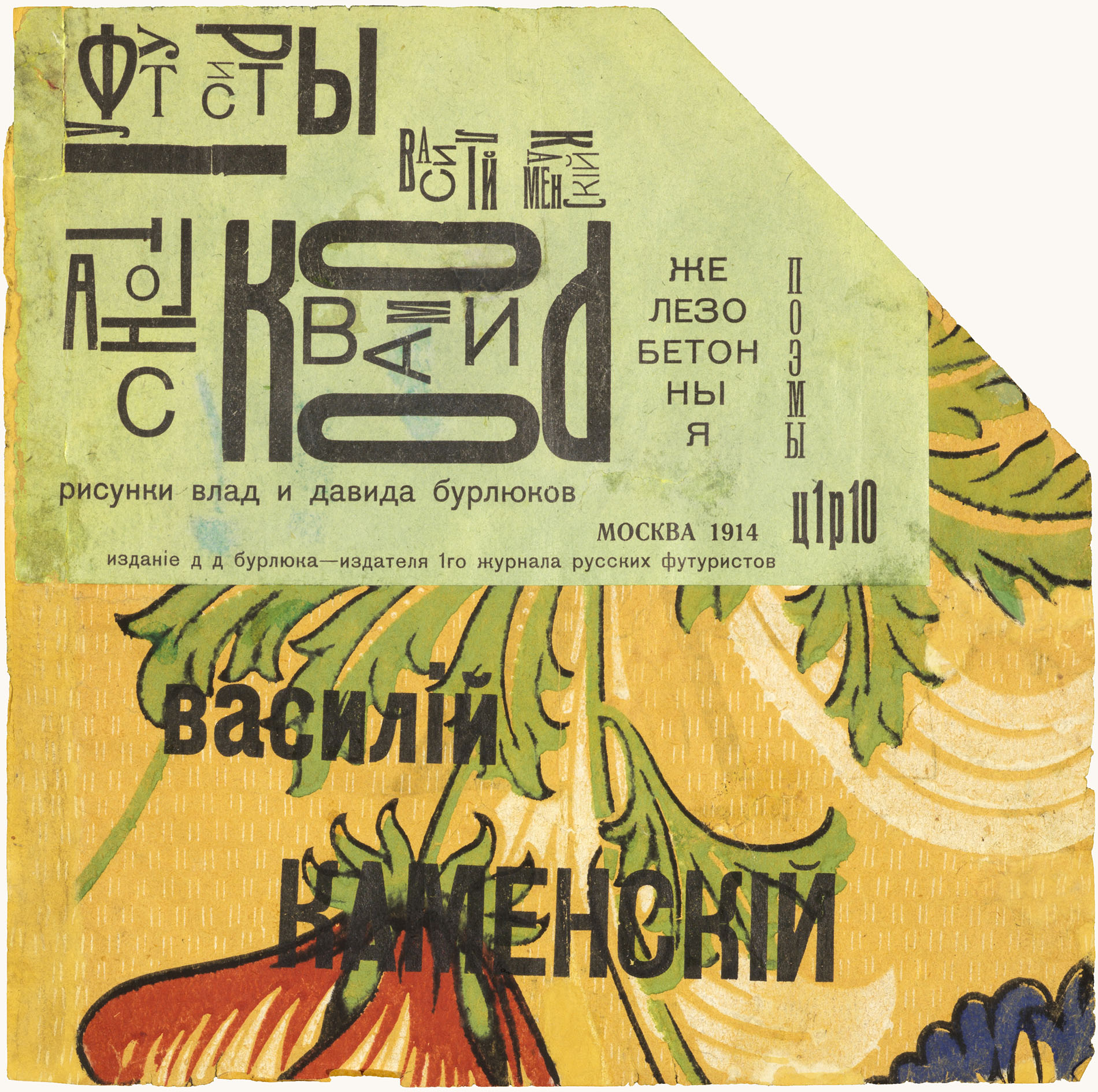
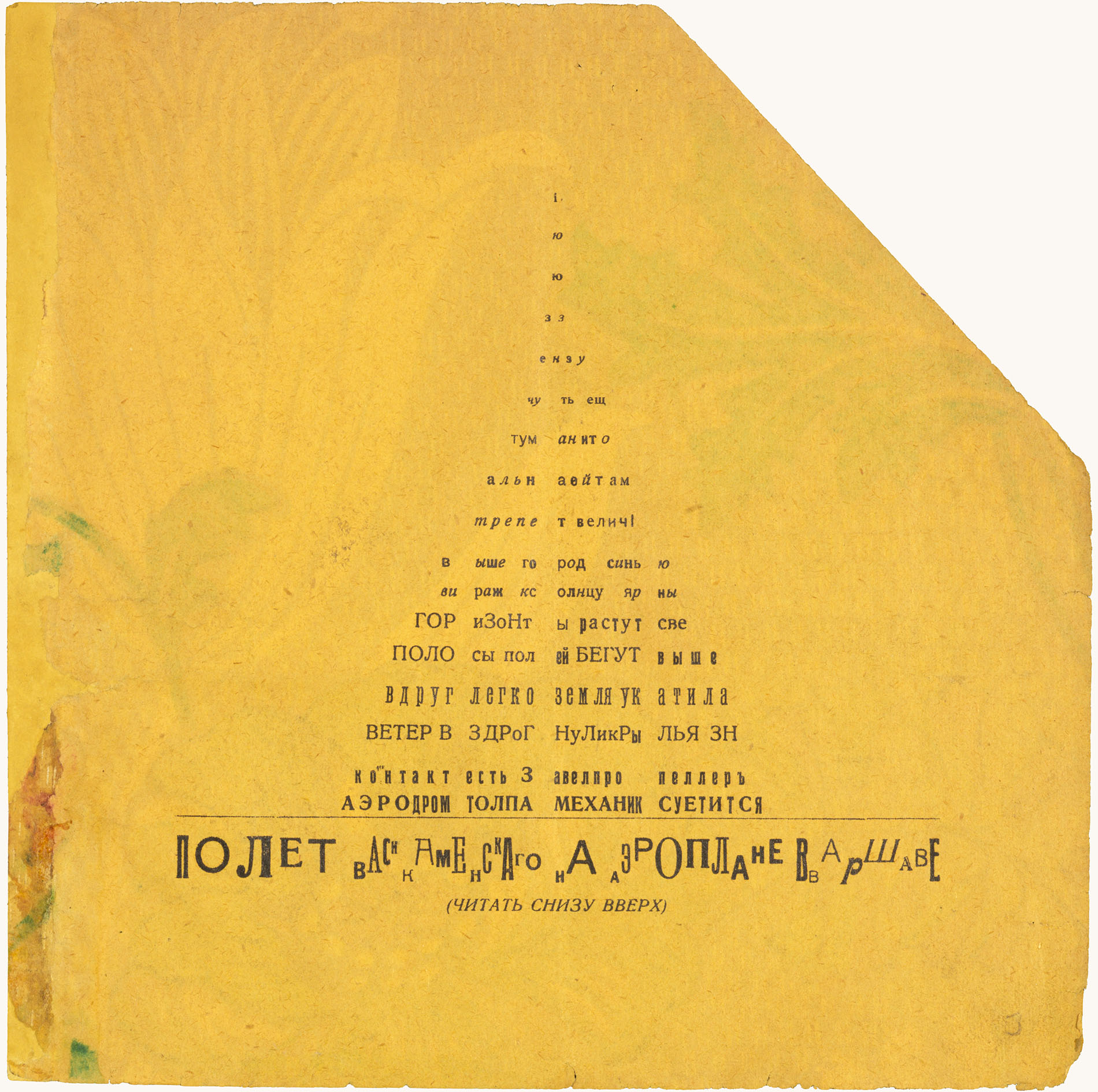
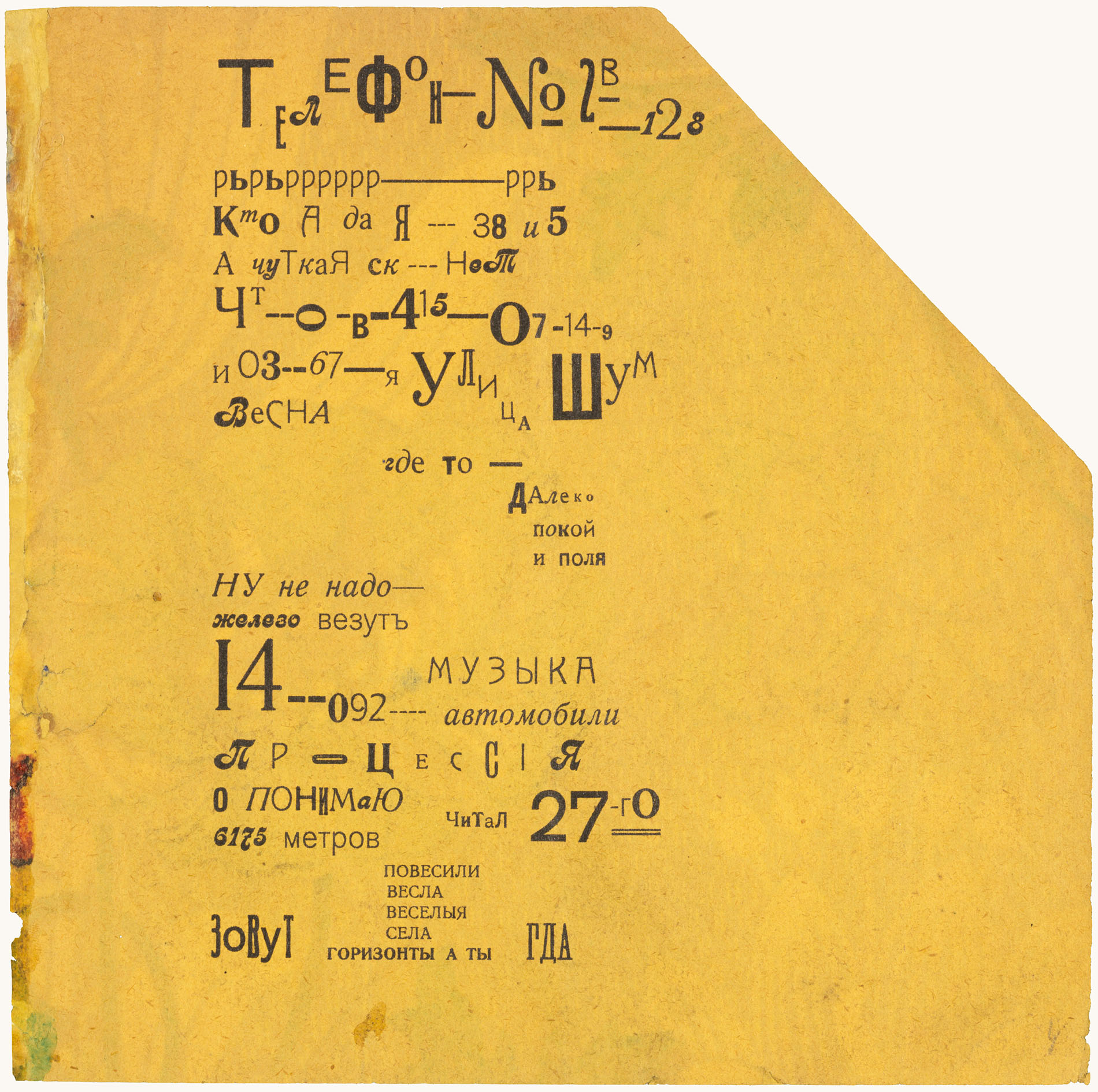
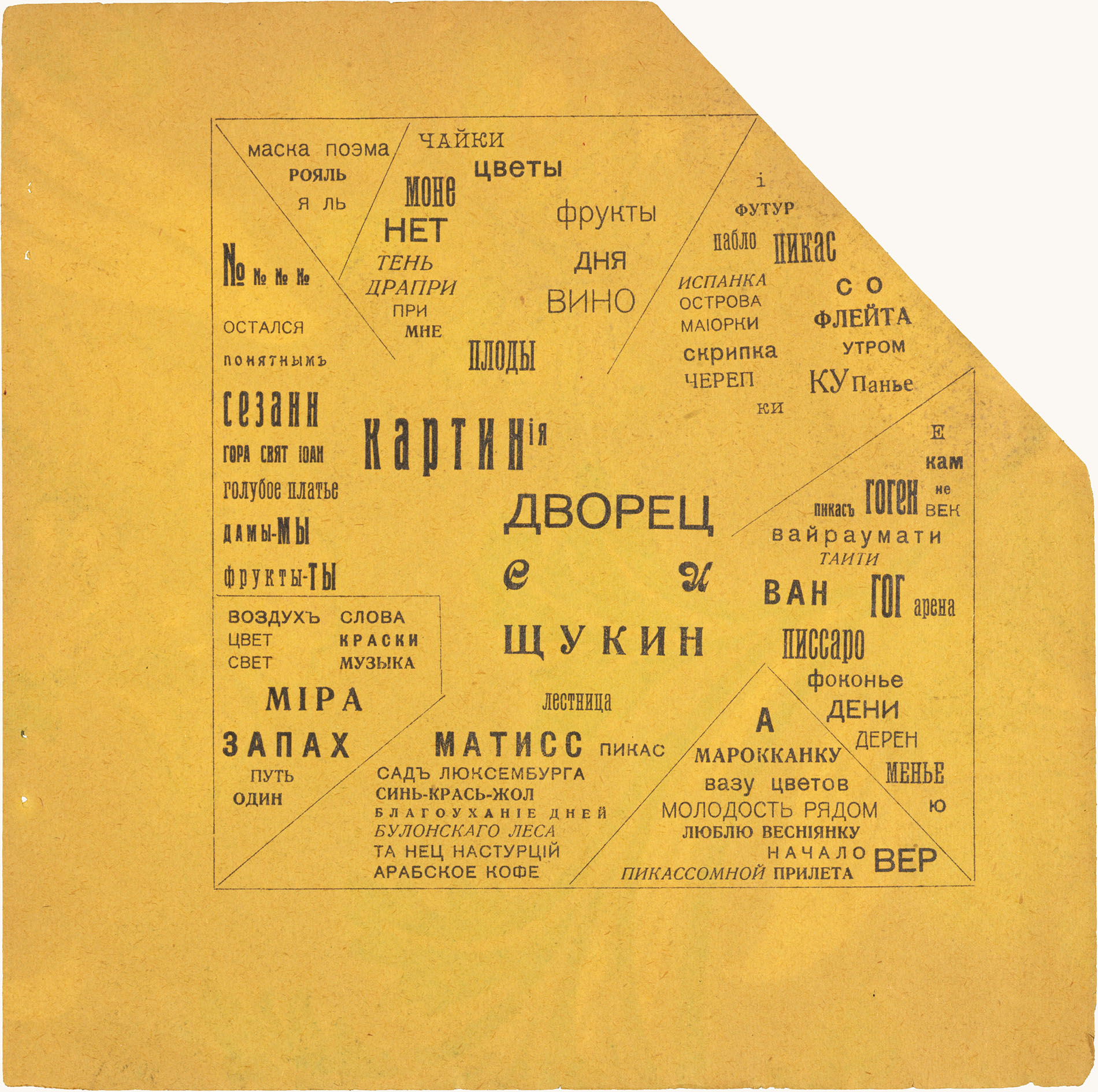
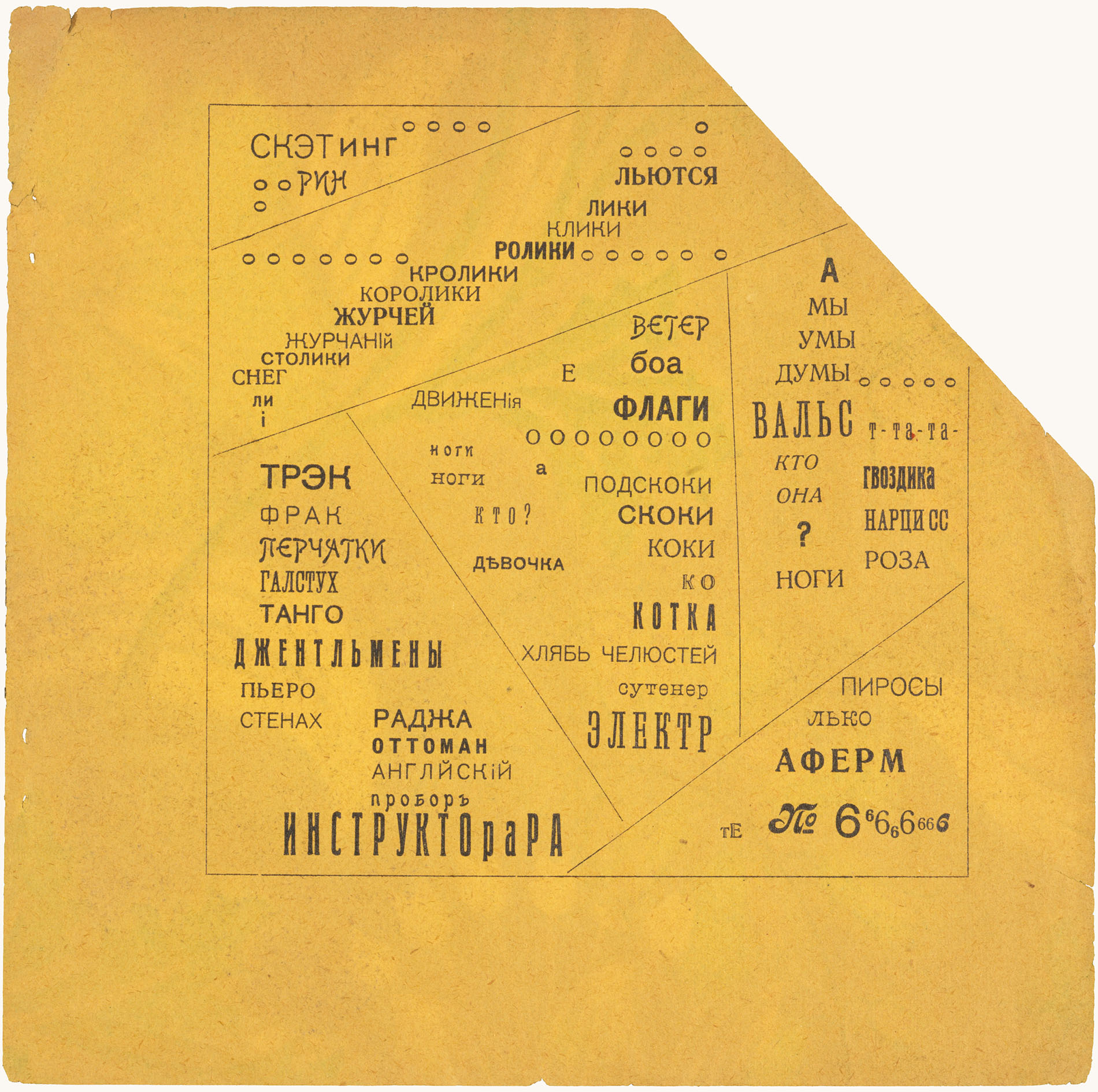
Tango with Cows by Vasily Kamensky is a key artifact in the history of Russian Futurism, graphic design, visual poetry, and artists’ books. Printed in Moscow in March 1914 on pentagonal sheets of floral wallpaper, all of the book’s poems have a prominent visual form created entirely with typography. The most experimental works in the book—the six so-called “ferroconcrete poems”—dispense with linear order and explore the spatial possibilities of the printed page. The book also includes two illustrations by David Burliuk and one by his brother Vladimir.
Most of the book is about the modern city and modern technology. There are poems about aviation (Kamensky, the first ever poet-aviator, performed exhibition flights before crashing his plane in 1912), the movies, the telephone, the circus, Moscow night clubs, roller skating, and Sergei Shchukin’s collection of modern painting. The poems also make repeated references to the global tango craze of 1913–14.
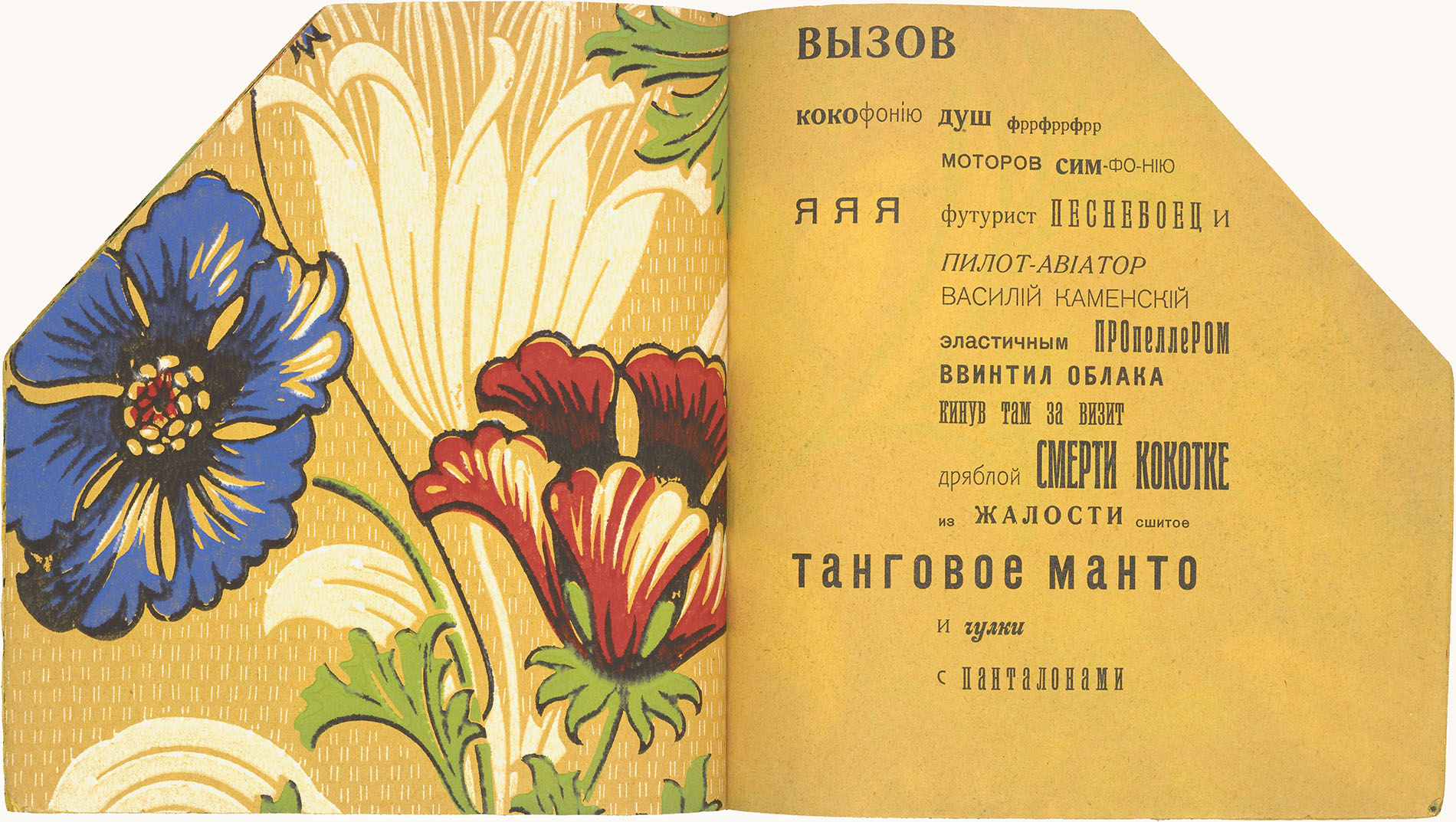
The extremely innovative typography of all of the poems replaces the conventions of literary typography with those of advertising. Instead of a neutral and unobtrusive design meant to allow words to speak for themselves, the many different sizes and styles of type inflect and structure the reading experience of every poem. Utilizing almost every font of type in the shop of the book’s printer, every letter in the book demands to be seen as well as read.
The ferroconcrete poems depart furthest from literary conventions in that they lack a clear order of reading. The reader is free to explore the page as if it were a painting. In these poems, Kamensky has broken with the temporal linear dimension inherent in speech and has, perhaps for the first time in modern literature, explored the spatial and non-linear affordances of the page.
With the publication of Tango with Cows: Translation, Facsimile, and Commentary it has now been translated into English and recreated for the twenty-first century by Daniel Mellis and Eugene Ostashevsky.